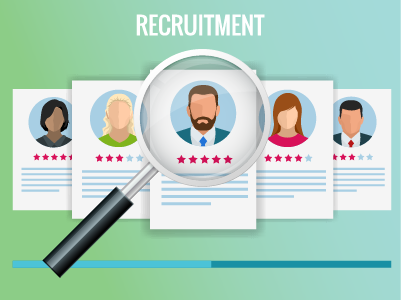Onboarding new hires is an essential part of any organization and a very important task for HR. There are various aspects of this process which include handling many documents, sending periodic reminders, answering questions from new employees, etc. All of these concurrent tasks can overwhelm HR. And unfortunately, sometimes human error can happen. That can lead to problems in the onboarding process which can lead to a poor employee experience. Since the retention rate of a company is very much dependent on this initial employee experience, many companies are now shifting to automating the onboarding process.
What Does Automated Onboarding Mean?
Simply put, automated onboarding is when you have a structured onboarding process that guides your new employees at every turn with minimal manual assistance necessary. Most companies do this by using employee onboarding software. There are other apps and software that can work along with this software to make the work of HR easier and the process smoother for everyone involved.
How Does Automated Onboarding Compare To Manual Onboarding?
To start, automation of the onboarding process leads to improvement in the hiring process and lowers employee turnover. When going about onboarding manually, you will find more inefficiencies in the work being done. Second, manual handling of data can lead to human error, higher costs, and missed deadlines. On the other hand, an automated onboarding process leads to centralized data hubs, minimal human error, reduction of costs, and productivity increases.
1. Faster Document Processing
Documentation of the new employee is a very crucial job and with automated onboarding, you can do so even before the new hires come for their first day on the job. Since their documentation is done by the time they join, the first day can be spent on knowing their colleagues, learning about the company, and introducing themselves.
With the paperwork out of the way, your new employees can start focusing on their work from the first day. Many tools can help you with that, and if you are using employee onboarding software, the task will be taken care of by it. Important documents like contract manuals, company policies, and others will be sent automatically to the inbox of the new employees that can check out before their joining date. If they have any questions, they can contact HR and all issues can be cleared up before their joining.
2. Automated Data Entry
All new employee data is collected automatically and entered into your organization’s work process smoothly when your onboarding is automated. It includes everything from payroll info, contact numbers, home addresses, and more. Automating the onboarding process makes it easier for your other organizational software like ERP, accounting software, etc. to avoid any kind of human error. It also makes the job of HR easier to create reports based on your employees’ demographics, job history, headcount, and more.
3. Improved Employee Engagement
New hires often find it hard to communicate with HR or get responses from them. That is because when done manually, onboarding new employees can swamp HR with paperwork, repetitive admin work, and more. It becomes hard for them to effectively communicate with the new employees leading to lower employee engagement, which can lead to higher retention rates in the long term. But with automation-focused business management software, most of the work is done automatically freeing HR to focus more on interacting with the new hires on a human level.
From there, HR will be able to better answer any questions the new employees have, guide them better during the orientation programs, and even have time to create FAQ libraries for them. All these improve new employee engagement and lead to higher employee retention.
4. Welcoming Candidates Becomes A Breeze
Retaining new talents is very important for organizations in this competitive job market. This is why companies love to welcome their new hires with a personalized welcome package. With automated employee onboarding, this becomes an easy job for HR. All they have to do is set up online forms to collect personal details of their new hires (t-shirt sizes, mailing addresses preferred pronouns) and then create the perfect welcome package for each of them. And all these can be done before they set foot in their office. They’ll feel more attached to the company and have greater job satisfaction over the course of their employment.
5. Improve Interactions Between People
During the new employee onboarding, the new employees lay importance on 1:1 interaction with their managers. These interactions help them to know their role in the organization, build better relationships and guide them through their expected goals. With automation-capable software solutions, HR is free from redundant tasks and can handle these kinds of interactions better. Plus the automated system will create scheduled office tours, alert the employees about their orientation and training, schedule when to take their headshots, and other tasks that new hires have to go through.
6. Automatic Benefit Enrollment
Today’s working generation lays very big importance on the benefits and perks a company offers when they are looking for a job. This is why organizations entice talented individuals with perks like commuter benefits, membership perks, and premier health plans among others. However, many times when there is no automation, the employees fail to get information or fail to enroll in such company benefits right away, if ever. But with automation through employee onboarding software, they get automated emails regarding all these on their first day. The emails provide detailed information on how to avail of them and what exactly they’re entitled to. Sometimes companies have different software to provide these perks and benefits, but the automated onboarding process easily works with such software, and everything is under a single platform.
By automating the onboarding process your organization will be much more streamlined .from first day to retirement Not only can your new employees become productive from their first day, but even your existing employees can also do their job better.










